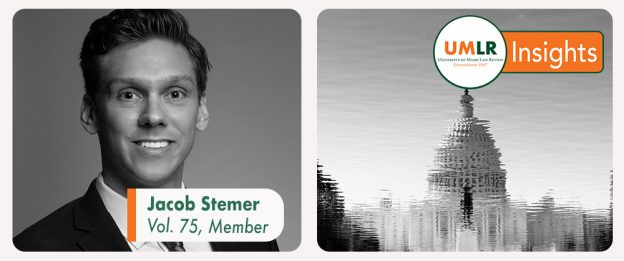JACOB STEMER—The Covid-19 pandemic has led to over two million infected people and over 150,000 deaths world-wide (as of April 19, 2020). In the United States, there are over 750,000 confirmed cases and over 40,000 confirmed deaths related to the novel coronavirus. Additionally, the pandemic has caused a near-complete shutdown of the “non-essential” aspects of society and the economy. There are many that are critical of the response in the United States, both at a federal and state level. While it may be too late to stem this nationwide outbreak, how can the United States prepare for the next one?
Over two-months after restrictions started, the Chinese city of Wuhan, which was the initial epicenter, was lifted out of the lockdown that began in response to the Covid-19 outbreak. The lockdown, criticized by some as being too Draconian, limited the movement of all citizens in Wuhan and most of Hubei province. On top of the lockdown, those who had recently been to Wuhan and the surrounding area were, and are, being tracked and monitored to keep the virus controlled. The government accessed transportation logs, facial-recognition cameras, cell phone data, social media, and health information to keep tabs on its population. Upon returning to their home cities, those who had travelled from Wuhan found themselves on publicly leaked government lists detailing private information such as ID numbers, addresses, and occupations. Phone and house calls followed, with government officials monitoring where they were, where they had been, when they had been there, and with whom they had been in contact. Despite criticism of alleged civil liberties violations, China can point to the fact that its reported daily deaths due to Covid-19 are now in the single digits and its total reported cases remain well below 100,000 as justification. Meanwhile, several western European countries have seen cases surge past 100,000 and the United States over 750,000.
In the United States, federal power is limited in terms of controlling and tracking citizens—or is it? Quarantine and isolation powers of the federal government were established in the Public Health Service Act (codified in 42 U.S.C. §§ 264-272). The statutory provisions derive authority from the Commerce Clause (U.S. Const. Article 1, Section 8, Clause 3). Generally, the law gives the U.S. Secretary of Health and Human Services the authority to take measures against the spread of communicable disease into the United States and between the states. These measures include, but are not limited to, placing people into isolation or quarantine. The Centers for Disease Control and Prevention defines quarantine as the “separate[ion] and restrict[ion] [of] the movement of people who were exposed to a contagious disease to see if they become sick” and isolation as the “separate[ion] [of] sick people with a quarantinable communicable disease from people who are not sick.” Noticeably absent is any express power over the general population and those who have not been exposed to, or not known or suspected of having, a communicable disease. Most of the lockdowns in the United States are effected and controlled at the state and local level—by local government officials with police power. This uneven and inconsistent state-by-state strategy may be a major contributing factor to the United States now being the nation most impacted by this novel coronavirus. As a result, there is little doubt that once the dust settles, there will be a push to pass legislation expanding the potential response of the federal government in the next pandemic.
The Patriot Act was passed a little over one month after, and in response to, the September 11, 2001 terrorist attacks. Owing to the overall failure of the country’s intelligence, the Act reorganized government agencies charged with protecting the United States. With little pushback, the Patriot Act also saw an expansion of the government’s authority to monitor and track United States citizens and a reduction of oversight in the carrying out of that surveillance. Provisions of the Act, that expired in 2015, granted access to the phone records of United States citizens from private companies and wire-tapping upon approval by secret court proceedings (§§ 206 and 215 of the Patriot Act). What would a pandemic-response version of the Patriot Act look like, and what rights would we be forced to give up?
The key to a practical federal response would be based on surveillance: tracking and tracing a “patient zero” within the United States and anyone who came in close proximity to that person and themselves—euphemistically, contact tracing. The Public Health Service Act addresses these actions to a certain extent; however, technology may expand the intended extent of the Act. Location and Bluetooth data from cellphones can be used to track where a person is and those who had been within a communicable range. Data from airlines, railways, and toll operators can put together a clear mosaic of a person’s movement without that person having crossed an international or state border. Social media platforms can track a person’s tagged locations. Hospitals may be forced to log diagnoses data in a federal register. All this data may be organized in one federal database or agency for curbing the next deadly outbreak on U.S. soil. One may argue that information is already being tracked and we agree to most of it. Sure, but it is not all in the hands of federal agencies, and it is not centralized and combined by any one entity.
As the doctors, nurses, and other frontline workers sacrifice their own health and lives, as well as those of their loved ones during this unprecedented time, we should all be thinking of the sacrifices we are going to make when the inevitable is asked of us: what price, in terms of individual freedom and privacy, are we each willing to sacrifice for the health, safety, and security of the nation as a whole?






